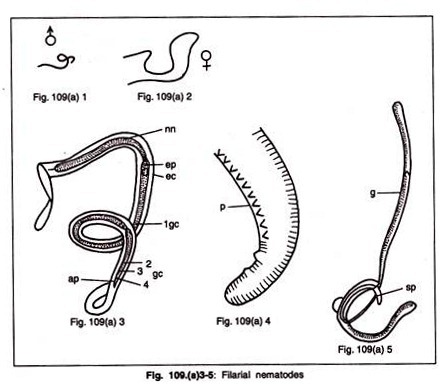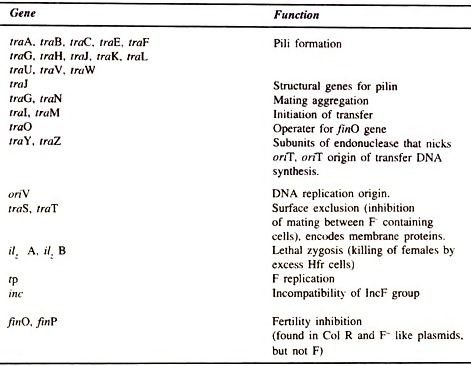ADVERTISEMENTS:
The below mentioned article will highlight the three types of modification of stem.
They are: (1) Underground Modifications for Perennation, Vegetative Propagation and Storage (2) Sub Aerial Modifications for Vegetative Propagation and Perennation and (3) Aerial Modifications.
A. Underground Modifications for Perennation, Vegetative Propagation and Storage:
A number of herbaceous plants find it impossible to survive above ground during unfavourable seasons of the year, usually the winter. Thus, they are short living annuals. Many such plants store up food material in the underground parts.
ADVERTISEMENTS:
When the aerial’ shoot withers away during the unfavourable season the underground parts remain safe. Next spring, as the season again becomes favourable, aerial shoots come out which ultimately flower and again die next year after storing up food underground.
Perennation is ensured this way by vegetative reproduction. These underground structures, although not green, are recognised to be stem structures because of (1) the presence of nodes and internodes; (2) scale leaves and adventitious roots coming out from the nodes; (3) buds at the axils of scale leaves, at the apices of these underground structures and on the apices of their branches; and (4) their anatomical structures which resemble stems.
There are several very common types of them:
(1) Rhizome:
Rhizomes are underground dorsiventral stems or branches growing horizontally- under the surface of the soil. These are brownish in colour so that they are easily mistaken for roots. But, they are divided into nodes and internodes, there are brown scale leaves at the nodes and there are axillary as well as apical buds. Adventitious roots develop on the lower surfaces of the nodes.
ADVERTISEMENTS:
The more common types of rhizomes are rather fleshy due to the storage of much, food material. An apical bud gives rise to the annual shoot which dies at the close of the season leaving a scar while the rhizome continues its growth by a lateral bud .
The rhizome is, therefore, usually of a sympodial nature. Common examples of such rhizomes are ginger (Zingiber officinale ) and turmeric (Curcuma domestica) which are much branched. The rhizome of Canna is not branched so profusely. Rarely, monopodial rhizomes may be found as in the case of ferns like Pteris. Here, the internodes are rather long and the rhizome grows horizontally by the apical bud which does not terminate in a shoot. Aerial leaves are developed laterally from the nodes.
A special type of rhizome is the rootstock which is a rhizome growing up vertically instead of horizontally. Very common examples of rootstock are found in bananas and many aroids (e.g., Alocasia indica).
The sobole may be considered either as a thin rhizome or as a runner. They are described later under runners.
Rhizomes and other kinds of underground stems sometimes bear a special type of roots called contractile or pull roots . These roots contract after formation and pull the growing rhizome or other organ deeper down into the soil. These are illustrated in connection with the root modifications.
(2) Stem-Tuber:
Tuber is a general term applied to any fleshy part of the plant which may store food. These may be stems (underground as in the stem-tubers under discussion and aerial in some bulbils and pseudobulbs) or roots (root-tubers).
They are largely used as food and the most common of them is potato (Solanum tuberosum ) . When potato is grown from eye buds, after the plant is rooted to the soil, the lower part of its stem is covered by earth. Axillary or adventitious branches grow from this underground part of the stem . These branches swell up at their apices into tubers due to the accumulation of food substances (mostly starch) and the arrest of growth.
Each tuber develops slowly. It is a swollen bit of stem on which many internodes are present but not distinct because of the great swelling. The nodal points are noted by the presence of scale leaves at an early stage and eyes or rudimentary buds at the axils (marked by small depressions) of these scale leaves.
ADVERTISEMENTS:
These eyes are arranged spirally on the tuber and are more crowded towards the distal end (called ‘rose end’) which is terminated by an apical bud.
The point of attachment of the tuber to the stem is marked by a scar which is opposite the apical bud. The tuber is protected by a corky skin. Adventitious roots are absent on the tuber at this stage.
Tubers are also found in some other common plants as the weed Cyperus rotundas and the vegetable artichokes (Helianthus tuberosus or Jerusalem artichoke storing inulin and Stachys tuberifera or Chinese artichoke storing stachyose). In Helianthus tuberosus the scale leaves and nodes are much more prominent.
(3) Bulb:
What is commonly known as bulb is actually an underground modified bud with a very much reduced stem (disc) and fleshy scale leaves growing from it. The disc has a convex or conical shape with very much compressed internodes from the nodes of which fleshy scale leaves arise. At the apex there is a bud which develops into a flowering scape at the proper season .
Some daughter bulbs develop from the axillary buds which may also develop branch flowering scapes. Much food is stored up in the fleshy scale leaves which may be true scale leaves (cataphylls—described in connection with leaf) or the bases of the green leaves of the last season.
From the undersurface’ of the disc a tuft of adventitious roots grow. In some onions new bulbs develop in a peculiar way. Some miniature bulbs or ‘bulbils’ are found to replace some of the flowers in its inflorescence in the same way as bulbils develop in Agave.
Two types of bulbs are distinguished according to the arrangement of the fleshy scale leaves:
ADVERTISEMENTS:
(1) In the tunicated bulb, as in onion (Allium cepa), tulip (Tulipa), hyacinth (Hyacinthus) and tuberose (Polyanthes), the scale leaves are arranged in a concentric manner as may be seen in a cross-section.
The whole bulb is covered by some dry membranous scale leaves which form the tunic.
(2) In scaly or imbricate bulbs, the scale leaves are not concentric but are arranged loosely like the petals of a flower possibly overlapping one another only at the margins.
Such a bulb is not a compact body as in the other case and is usually not covered by any common tunic. This type of bulb is not so very common but may be found in some garlics (Allium sativum) and more typically in the lilies (Lilium sp.) which also show contractile roots.
ADVERTISEMENTS:
In garlic (Allium sativum) a number of cylindrical but separate (i.e., not concentric) fleshy scales, called cloves, are arranged as in a naked bulb but a group of such ‘cloves’ are enclosed by a whitish, skinny tunic.
True bulbs are found only among monocotyledons. The daughter bulbs or cloves, which develop at the expense of the mother bulb, are very effective means of vegetative propagation.
(4) Corm:
The corm, sometimes called a solid bulb, is really a solid very much condensed vertical rootstock with a large apical bud. There are some scale leaves on its body and adventitious roots grow either from its base or all over its body.
In Amorphophallus campanulatus the corm is a huge condensed single internode with numerous adventitious buds and roots on its body. The apical bud develops the leaves of the year and gradually consumes the food material within the corm so that the latter shrivels up. At the end of the season a new daughter corm is, formed by accumulation of food material at the base of the shoot forming a new (second) internode on the top of the shrivelling last year’s corm.
Adventitious buds also develop into daughter corms. The same phenomenon may be seen in Crocus sativus (saffron Kashmir) where the corm is covered by some more or less sheathing scale leaves bearing axillary buds.
ADVERTISEMENTS:
One (sometimes more) axillary bud on the top of the corm forms the aerial shoot which consumes the old corm and the new corm is formed by the swelling of its base towards the close of the season when the aerial shoot dies.
Next year, another top axillary bud develops on this new corm as the aerial shoot. The development of this type of corm is, therefore, sympodial. In Colchicum autumnale (meadow saffron, also from Kashmir) the axillary bud that develops into the aerial shoot is towards the base of the mother corm.
Thus, in this case, the new corm is on the side and not on the top of the old corm. The common garden Gladiolus lily is also an example of typical corm.
B. Sub Aerial Modifications for Vegetative Propagation and Perennation:
Certain plants, generally of weak herbaceous habit, propagate quickly by means of special branch stems which give rise to small daughter plants. Thus, although the individual plants are short-living, the colony of plants is perennial.
These modified branches either grow along the surface of the soil (water in aquatic plants) or may be partially or wholly underground.
(1) Runner and Sobole:
ADVERTISEMENTS:
In certain plants showing the creeping habit like the common dub grass (Cynodon dactylon), Oxalis , Centella asiatica , strawberry, etc., the axillary buds from the lowest leaves give rise to slightly modified branches.
The basal internodes of the bud elongate horizontally and trail along the soil carrying the bud to a distance from the mother plant where it gets fixed to the soil by means of adventitious roots and develops a new daughter plant.
This special branch carrying the bud is called a runner. It may be of several internodes and have scale leaves on the nodes. Such runners grow in all directions from the mother plant and the daughter plants again propagate in all directions in a similar manner. Thus a single plant soon covers a large area by its progeny. In Colocasia (common arum) the runners are somewhat thicker and may be partly or wholly underground .
A special type of underground runner or creeping stem is the sobole . It is sometimes included within rhizomes as it may be considered as one of them, only it is thin and docs not accumulate any food matter. But, as the term rhizome is usually applied to fleshy structures storing food, soboles are better considered separately. These are found in the creeping grasses.
These grasses grow these underground stems in all directions giving rise to innumerable offsprings. This is a very effective means of propagation. Even if these soboles are cut into pieces during cultivation, each node gives rise to a new plant.
Most grassy weeds like the couch grass (Agropyron), kans (Saccharum spontaneum) or ulu (Imperata cylindrica)-possess soboles and are, therefore, very difficult to eradicate. These weeds are, however, of some value as sand binders.
(2) Stolon:
This is a term which has been variously used. It is sometimes taken to be synonymous with runner. More commonly, it is applied to a special type of runners which do not grow horizontally from the beginning.
At first they grow upwards like ordinary branches and then arch down to meet the soil where daughter plants are formed after striking foot.
In the horticultural method of layering in fruit trees, etc., branches are suitably lowered down to meet the soil where they are made to strike root (Fig. 131). Natural stolons like this are found in Mentha sp. and some plants of the Rosaceae .
(3) Sucker:
Sucker is an underground runner which soon goes up and forms a daughter plant after striking root. Sucker plants are also formed from axillary buds at the nodes of this underground runner.
Plants developed from other underground parts (e.g., roots of some shrubs and trees) are also called suckers. Typical suckers are seen in garden chrysanthemum , Mentha arvensis, etc.
(4) Offset:
This is found in aquatic plants and is just like the runner, only it is shorter and thicker. Common instances are the water hyacinth (Eichhornia crassipes) and pistia (Pistia stratiotes).
C. Aerial Modifications:
The aerial stem is found to be modified for various purposes. Most of these come under metamorphosed stems as the modifications are so extreme that the stem nature of these structures is very difficult to make out, except for the origin and the position. Thus, one may say that the stems have been completely changed or metamorphosed.
(1) Phylloclade or Cladophyll and Cladode:
This is a very interesting modification met with in the xerophytic plants which have to greatly cut off all water loss. This they do by checking the growth of leaves which are mainly responsible for transpiration. But, the stems become flattened or swollen and green so that they may take up the photosynthetic function of the leaves. Such flattened or swollen structures are called phylloclades or cladophylls.
These are often mistaken for leaves. The phylloclade of Opuntia (Cactaceae) is very common . This phylloclade consists of many fleshy flattened internodes similar to underground stem-tubers and the leaves at the nodal positions are metamorphosed into spines or small scaly leaves.
Flowers are also borne on the nodes. It develops a strong cuticle and contains much mucilage which helps to retain water. Such phylloclades are common in the families.
Cactaceae and Euphorbiaceae and in Muehlenbeckia platiclados (= Coccoloba platiclada) of Polygonaceae , Casuarina, etc. The phylloclades of Ruscus aculeatus of Liliaceae look exactly like leaves with veins but the flowers show the nodal positions.
Cladode is a type of phylloclade consisting of one internode only. A very beautiful example of this is Asparagus racemosus of Liliaceae. The ultimate branchlets are of one internode only. These are cylindrical (not fleshy) and are mistaken for leaves.
They are cladodes while the leaves are reduced into prickles. Some varieties of Muehlenbeckia may also show phylloclades of single internodes which are flattened structures and more leaf-like.
The case of the small aquatic weed Lemna is rather problematic. A green thalloid leaf-like structure lives freely, multiples vegetatively and develops flowers and roots on it without, apparently, showing any stem. One opinion is that this is an abnormal free-living leaf. A second view is that the plant body is a flattened leaf-like stem without any real leaf. If the second view is correct then this is only another instance of phylloclades.
In some ordinary plants like the Cucurbits the stem sometimes assumes an abnormal flattened appearance. But this is not a phylloclade. It is usually formed by the fusion of a number of buds. This type of abnormal development is known as fasciation.
(2) Thorn:
Axillary buds are sometimes arrested and transformed into these hard structures. Thorns should be distinguished from spines and prickles as they are very deep-seated structures with vascular connections, being direct prolongations of the stem.
Prickles are mere superficial outgrowths on the epidermis. Spines are intermediate forms when some other plant organs, e.g., the tips of date palm leaf segments or the stipules of Acacia, become hardened sharp structures. The development of such sharp and hard structures is a characteristic of xerophytes.
Thorns are commonly seen in the garden hedge plant Duranta where sometimes leaves are found to develop on the thorn showing its stem nature very clearly.
Sometimes, the thorn is branched as in Carissa carandas and Flacourtia . Thorns are found in many other common plants, e.g., Hygrophila auriculata . In prunes the thorn bears flowers like an inflorescence axis.
The ‘thorn’ of lemons and the double ‘thorns’ of the common wood-apple (Aegie marmelos ) are of problematic origin. They are not considered as true modified stems and are discussed in connection with leaf modifications.
(3) Stem-Tendril:
Tendrils arise as modifications of different plant organs as have been seen when discussing the tendril climbers. Some tendrils are clearly seen to be modified stems, e.g., when they develop on the axils or the branch tips.
In passion flower the axillary branches are modified into tendrils. In Vitis species the tips of the sympodial branches are modified into tendrils and are ultimately placed opposite the leaves.
Cissus quadrangularis is another such example. Inflorescence axes, which are also of stem nature, may be modified into tendrils as in Antigonon and Cardiospermum . The nature of the Cucurbita tendil is doubtful being, possibly, of prophyll nature.
(4) Bulbil:
These are modifications of axillary vegetative or floral buds and have been discussed under the modifications of buds .
(5) Thalamus:
The thalamus or the floral axis is a modified stem and is discussed in connection with the Moral organs.
(6) Pseudobulb:
In many aerial orchids one (rarely, more than one) internode of stem becomes lleshy and tuberous. This structure stores up a good quantity of moisture enabling the plant to survive unfavourable seasons of drought, i.e., the winter. Such structures are known as pseudobulbs .
(7) Dwarf-shoot or Spur or brachyplast:
While normally all foliage leaves are borne on the nodes of an elongated stem, in some plants most leaves are concentrated on special secondary stems located at axillary positions. These secondary stems are very short with very close internodes so that the leaves appear to be in clusters.
They are called dwarf-shoots or spurs or brachyplasts and are very common among Gymnosperms (e.g., pine). Such dwarf-shoots are also found in certain Angiosperms like Berberis .













